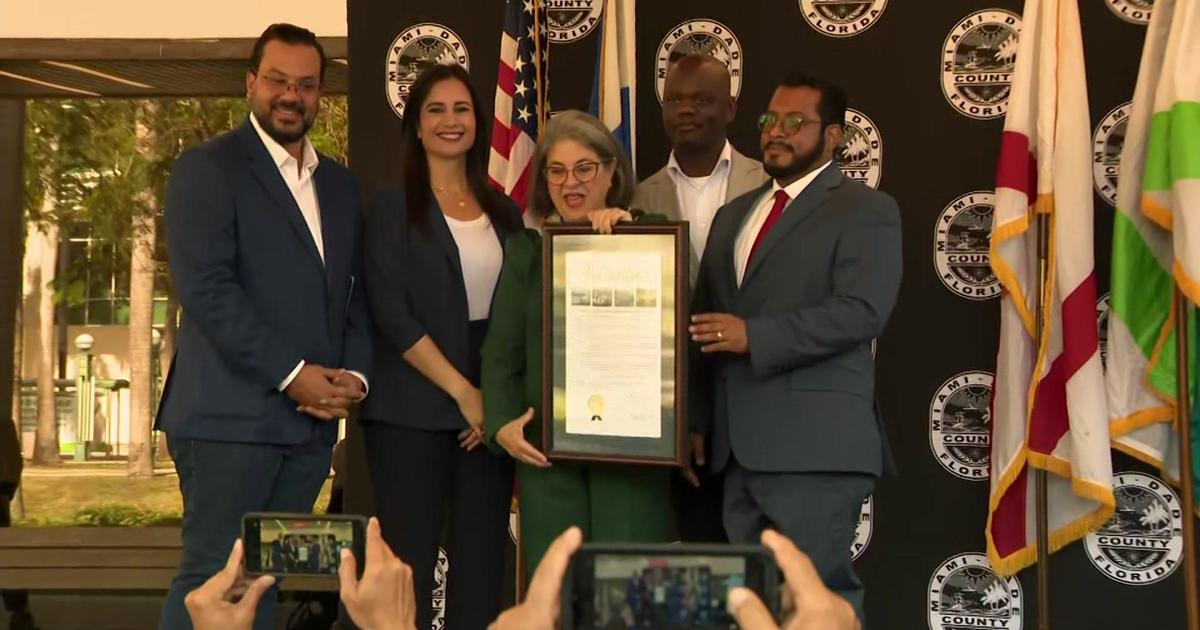In Miami, The Cuban School Uniform Finds A Market
MIAMI (AP) — At the Dollarazo discount store in Miami, a row of red-wine colored pants, shorts and jumpers offers a regular customer favorite — near exact copies of the Cuban school uniform.
"Customers would ask for it," said manager Orestes Canales. "So we brought it."
Each year, thousands of uniforms sold by discount capitalists in Miami find their way to the communist island where they are worn by Cuban school children.
The Cuban government provides just one or two uniforms per child each year, making extra school clothing one more item for relatives abroad to purchase and send back to Cuba. Despite Washington's five-decade Cuban embargo, economic links between families in both countries remain strong.
"There's an old Cuban joke," said Graciella Cruz-Taura, a history professor at Florida Atlantic University. "'What is it that you need to do well in Cuba, to be happy?'"
The response: "Family abroad."
Canales said he sells about 1,000 Cuban school uniforms annually, while a nearby store owned by the same company, "Nooo Que Barato!" or "Damn, That's Cheap!" sells a few thousand more. For $4.99, customers can buy a replica of the pants used by Cuban primary school students. Ninety-nine cents buys a requisite collared white shirt.
Roberto Salgado, a concert lighting technician, bought six white shirts for his nephews on a recent afternoon at "Nooo Que Barato!"
"Being children, they get dirty," said Salgado, 44. "And the family can't afford to wash every day."
Serafin Blanco, the owner of both discount stores, said he has been selling the burgundy Cuban primary school uniforms, and occasionally the secondary mustard-colored ones for at least 10 years.
He buys the uniforms from U.S. companies that produce similar colored outfits and sells them alongside other school supplies and items purchased at auctions.
Inside "Damn, That's Cheap!" are refurbished laptops starting at $150 and $10 backpacks. For each $100 they spend, customers get a free duffel bag to transport the items.
"For Cuba, we have it all!" the store proclaims in its many television and radio ads.
A micro-economy has developed in Miami catering to Cuban-Americans who regularly send clothes and food back to relatives on the island. That market has grown in the last decade, with more than 30,000 Cubans on average leaving each year since 2002. Many of them maintain close ties with relatives in Cuba.
In enclaves like Hialeah and Little Havana, discount stores are filled with everything a family might need: Shoes, underwear, baby clothing, silverware, coffee makers, and even mosquito nets. Cuba travel agencies and shipping services line the streets.
The Cuban government imposed stricter limits Monday on the number of products allowed in and increased custom duties, which families in Miami said would hurt their Cuban relatives.
Sales of the Cuban school uniform strike a resonant chord because, in some ways, it's a symbol of the revolution, which the vast majority of the exile population strongly opposes.
Education has been a priority for the communist Cuban government since the early years of the 1959 revolution. Volunteers were sent throughout the island to increase the country's dismal literacy rate. At the time, about 25 percent of Cubans were illiterate.
Today, Cuba has a 100 percent youth literacy rate, according to UNESCO, one of the few international organizations with Cuban education data.
But resources, from books to uniforms, can be scarce.
In Havana, several parents at uniform pickup day recently griped at how few they are able to get.
"For me, ideally, they'd have uniforms available and everyone could buy as many as they want," said Orieta Diez, 33, an optometrist with a 7-year-old daughter. "I can't come home from work and wash and iron every day. I need five shirts for the week."
She said the only sizes she was able to get for her daughter were too large and had to be tailored.
Gisela Garcia, 28 and the mother of two children, said she got extra uniforms from friends whose children had outgrown theirs.
In Miami, Josefa Espinoza, 43, is all too aware of the struggles facing her family on the island to make sure their children go to school in presentable uniforms. For several years now, she has bought the red-burgundy primary school uniforms, along with backpacks, pencils and crayons for two nieces.
"Everything they need for school," she said, "you need to buy here."
RELATED CONTENT:
(© Copyright 2014 The Associated Press. All Rights Reserved. This material may not be published, broadcast, rewritten or redistributed.)



